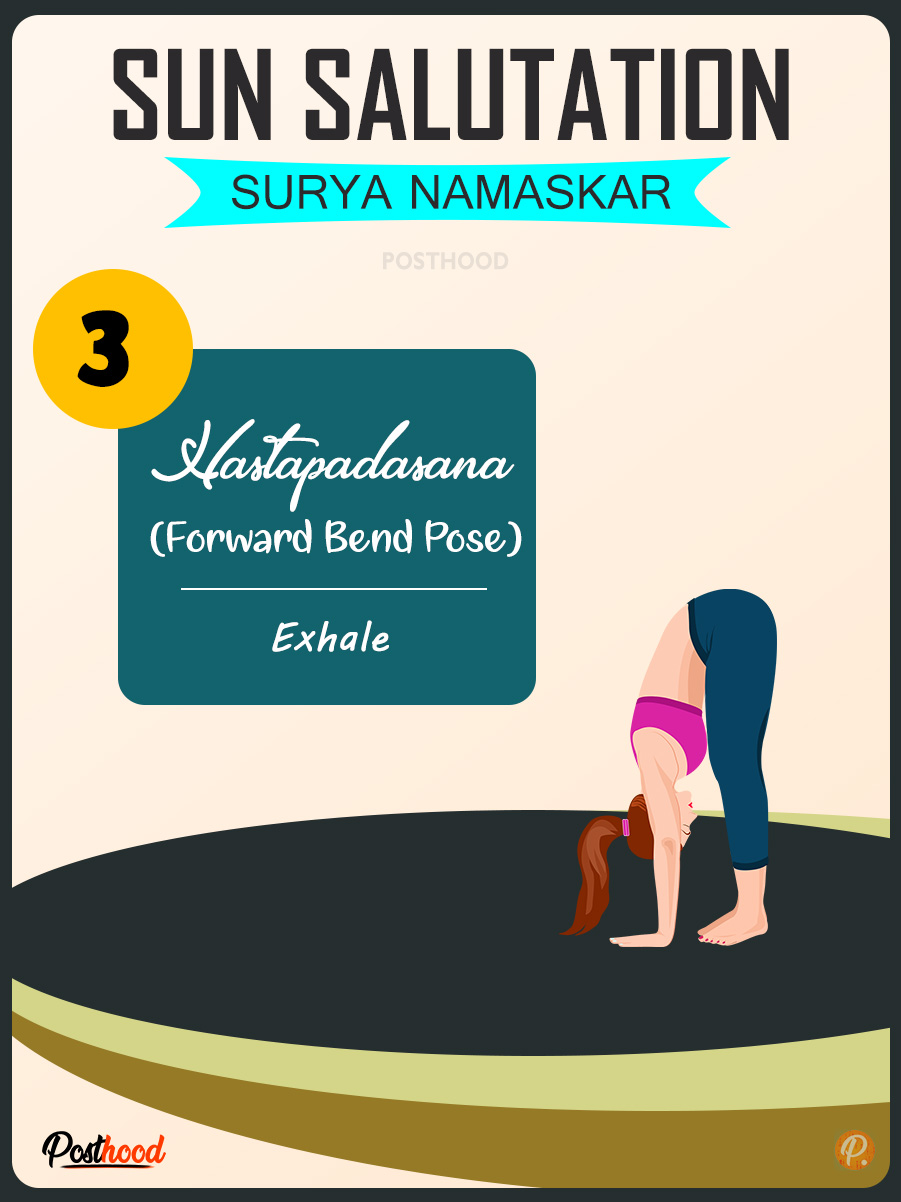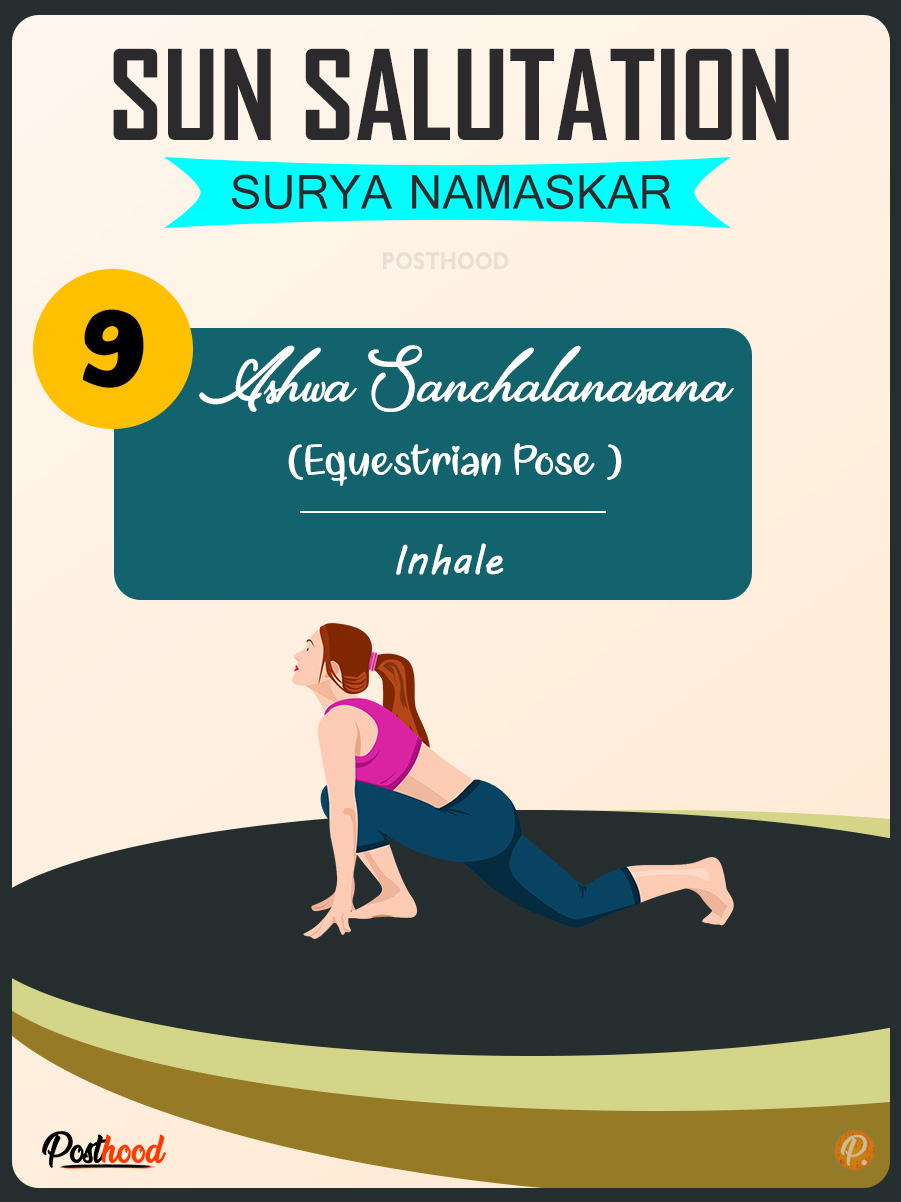Sun Salutation is one holistic sequential yoga regime that has stood the test of time over the few thousand years since it was incepted by the ancient Indian sages.
With a sequence of 12 asanas coordinated with the breath, this one yoga regime is said to be addressing every muscle of the body.
Over and above the myriads of benefits in physiological sphere of human existence, it also prepares our body for the spiritual up-liftment.
There was a time in ancient India when yoga was the way of life. It was a part of a morning ritual for everybody to start the day with a few rounds of Surya Namaskar during sunrise.
In India, each of the 12 postures is performed while uttering 12 mantras to express reverence and gratitude to the Sun God.
For the rest of the world, Sun Salutation is regarded as one of the all-inclusive aerobic exercises for weight loss and achieve several other health benefits.
The 12 easy and basic yoga postures weaved into a sequence have emerged to be the go-to-exercise regime for people who are hard-pressed for time and lack the commitment or tenacity to perform more intense yoga asanas.
Just a few days of practicing Surya Namaskar can transform your whole body flexibility. It is a very effective way to integrate yoga into your life.
In this Sun Salutation for beginners guide, you will learn step by step process to understand the impact of 12 powerful yoga pose on the human body and mind.
What is the Sun Salutation (Surya Namaskar)?
Generally, people understand Surya Namaskar as an exercise. Yes, it definitely does all that and even more.
Its a whole body workout for the physical system – a comprehensive exercise without any equipment.
But above all, it is an important tool that empowers human beings to break all the compulsive cycles and patterns of lives according to Sadhguru.
Sun is the center of our solar system. It is the creator and sustainer of life on earth. Essentially it has a profound impact on human physiology as well.
According to the ancient yogic scriptures, there are two governing elements in the human body namely the Ida and the Pingala Nadi.
The Pingala Nadi is the sun element whereas the Ida Nadi is the moon element.
The primary objective of Hatha Yoga is to create a balance between these two elements. Hence, doing Sun Salutation helps us to balance the sun element in our body.
Benefits of Sun Salutation (Surya Namaskar)
Surya Namaskar is one holistic regime that has countless benefits. The sequence of 12 poses, helps to:
- Build strength and stamina
- Lose weight
- Calm mind and relieve stress
- Maintain a good spine and back muscles
- Improve body posture
- Anti-aging
- Enhances concentration
- Improves cardiovascular and respiratory systems
- Improves endurance, stamina, and overall energy level.
Warm-Up Exercises Before Practicing Sun Salutation
It is important to do some mild warm-up exercises before practicing Sun Salutation, especially when you’re a beginner.
For beginners, it is recommended to exercise others easy pose until your body is flexible and pliable enough to practice Surya Namaskar.
Some of the light warm-up exercises include:
- Deep breathing
- Neck movement
- Hands and wrist movements
- Rotating your ankles and feet-toe movements
- Some mild backward, frontward and side stretching in sitting and standing posture
How to do Sun Salutation Steps?
Let’s breakdown the yoga poses for beginners to get into how-to-do and easy transitions into poses.
Step-1: Pranamasana / Prayer Pose

An erect spine and the hands folded to the chest had been regarded as the first indication of the evolution of the human physiology.
As the first pose of Sun Salutation, Pranamasana is a welcoming pose that helps to find a firm grip on the ground while bringing focus to your breath.
How to do:
Stand straight at the edge of the mat with your feet joined together or shoulder-width apart. Lengthen your spine, open up your chest, and bring your hands folded at the center of your chest.
Step-2: Hasta Uttanasana / Raised Arm Pose

From Pranamasana, move into Hasta uttanasana.
This posture opens up the chest and provides a very good stretch of the spine as well as the core muscles. It also improves lung capacity and digestion.
How to do:
Take a deep breath in as you lift your hands above your head and bend backward. Open your chest as you reach out, keep your biceps close to your ears and push your pelvis forward to get the maximum benefit of this pose.
Step-3: Hastapadasana / Standing Forward Bend

One of the basic yoga poses that provides a wonderful head to toe stretch.
It accentuates blood circulation, works on the abdominal muscles, provides flexibility to the spine, and stimulates the nerves.
How to do:
From Hastauttanasana, breathe out bringing your hands down and bend forward to touch the ground, beside your feet.
Step-4: Ashwa Sanchalan Asana / Equestrian Pose

How to do:
Breathe in as you take your right foot back and rest it on the knee, while your left foot is still grounded firmly in between your two hands.
Keep your spine erect and lookup.
Step-5: Dandasana / Plank Pose

This balancing pose helps to strengthen the arm, core and back muscles.
How to do:
Hold your breath for few moments as you move your left leg back to form a Plank Pose. Keep your arms straight underneath your shoulders and spine straight.
Step-6: Ashtanga Namaskar / Eight Limbed Pose

How to do:
Breath out as you gently lower your knees, chest, and forehead to touch the ground.
With your forehead touching the ground Ashtanga Namaskar renders humility to the mind.
Step-7: Bhujangasana / Cobra Pose

It also helps to open up chest, improves digestion and agility of your spine.
How to do:
Breathe in as you lift your chest to a cobra pose, with your palms pressing on ground and elbows attached to the sides of rib cage.
Step-8: Adho Mukha Svanasana / Downward Facing Dog

This full-body stretch is a perfect stress buster. It calms the nerves, promotes blood circulation, and strengthens legs, arms and back muscles.
It also helps to relieve the menstrual cramps when done with head support.
How to do:
Breathe out as you raise your hips and tail bone with the support of your legs and hands to an inverted V pose.
Try to keep your heels on the ground to deepen the stretch.
Step-9: Ashwa Sanchalan Asana / Equestrian Pose

How to do:
Breathe in as you bring your right feet in front to place it between your hands while left leg remains stretched backward resting on its knee.
Look up!!
Step-10: Hastapadasana / Forward Bend Pose

How to do:
Breathe out as you bring the left leg forward to join the right leg in between your hand.
Step-11: Hastauttanasana / Hand Raising Pose

How to do:
Breathe in as you lift your hands followed by your torso, keeping your spine straight bending backward to form Hastauttanasana.
Step 12: Tadasana / Mountain Pose

How to do:
Exhale, straighten your body and bring your down on your sides and relax. Repeat the sequence with the left leg.
This makes one round complete of Surya Namaskar.
How Many Rounds of Sun Salutation We Should do?
Ideally, it is advisable to start with 2-3 rounds of Surya Namaskar for beginners and try to take it to at least 10-12 rounds for optimum results.
Suppose you’re a yoga practitioner and can easily start with 12 sets of Surya Namskar. Then numbers of poses you will complete will be 288 poses in a 30 minutes session. How? Let’s dig into calculations…
One round of Sun Salutation consist of 12 poses and one set consist of 2 rounds of Sun Salutation; right and left.
While performing 12 sets of Surya Namaskar,
You will complete 12 sets x 2 rounds in each sets x 12 yoga poses in each = 288 yoga poses in a 30-minute of session.
Practitioners who want to learn Sun Salutation for weight loss, a 30-minute session can helps you lose a total of 230-kilo calories.
Mistakes Beginners Do In Sun Salutation
The most common mistakes that are likely to happen with early learners include:
- Incorrect postures
- Lose focus on the breath
- No Warm-up
- Incorrect alignment
- Rushing through the sequence trying to keep up with the numbers instead of focusing on the postures.
- Lowering the hips in plank pose that leads to lower back pain.
- Not being able to bring your feet forward while coming back to Ashwa Sanchalan Asan (Equestrian Pose) from Adho Mukho Swanasan (Downward Facing Dog). Often the practitioners struggle to bring the feet in alignment with the hands which creates pressure on the knee.
The Ideal Approach For Sun Salutation For Beginners
The more important is to get the posture right and coordinating your breath along with the postures.
It is advisable to practice at a very slow pace as long as you don’t acquire perfection in the postures.
In terms of rounds or repetitions, you can start with two rounds and then add one round after a month. Then one more round in the subsequent month and so on.
It would take around 25-30 minutes to complete 10-12 rounds of Surya Namaskar.
If you’re a new yogi, prepare yourself with these easy tips for first yoga class that will make you feel advance in less time.
FAQ:
1. What is the best time to practice Sun Salutation?
Sunrise and sunset are two best times to practice Sun Salutation. Ideally, it should be practiced on an empty stomach.
2. How many calories one can burn by practicing Sun Salutation?
The calorie burn will totally depend upon body type and how fast and slow you practice Surya Namaskar.
A 30-minute session of Sun Salutation can helps to lose a total of 230-kilo calories when you practice with average speed.
3. How many rounds of Surya Namaskar one should do to lose weight?
It takes 25 to 30 minutes to complete 12 rounds of Surya Namaskar. A 30-minute of session is enough to lose weight. You can also practice these power yoga pose for weight loss.
4. Should Sun Salutation be practiced at a high speed or a slow pace?
Ideally, the focus should be on perfecting the postures instead of running after the numbers of rounds or speed.
When practiced at a high speed, this exercise regime ensures all the benefits of aerobics or cardio exercise. While at the same time, when it is done slowly, it gives the therapeutic benefits of asanas.
5. Who should avoid doing Sun Salutation?
Pregnant and menstruating women, people with cardiovascular disease, high blood pressure, arthritis, wrist injury or lower back pain should never attempt Sun Salutation.

